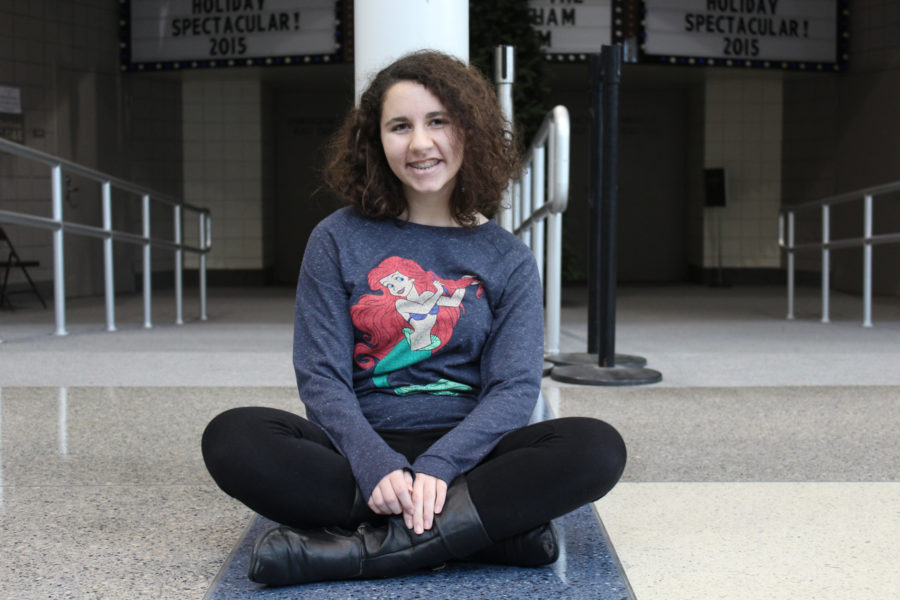 Ever since I was little, I have struggled with socialization. I have always been afraid of being judged based on what I say and to this day spend hours thinking on how the things I say make me appear to others. I started to dread social situations and struggled to utter even a single sentence in a conversation. Then, when I was in the seventh grade, I was diagnosed with social anxiety disorder, a disorder that causes people to fear social situations to an extent that is considered unreasonable.
Ever since I was little, I have struggled with socialization. I have always been afraid of being judged based on what I say and to this day spend hours thinking on how the things I say make me appear to others. I started to dread social situations and struggled to utter even a single sentence in a conversation. Then, when I was in the seventh grade, I was diagnosed with social anxiety disorder, a disorder that causes people to fear social situations to an extent that is considered unreasonable.
The other day I was sitting in Pre-Calculus when my teacher called on me suddenly.
“Oh, um …” I fumbled for the answer as I felt my heart begin to race and heat flush my cheeks. “Sorry, one second … It’s negative one to infinity.”
Despite the fact that this was a minimal socialization, this moment caused me anxiety for the rest of the day. It took several minutes for my heart rate to return to normal, and throughout the day I kept remembering that moment and thinking how stupid I must have looked and how I could’ve handled it better.
But that was not the first time this had happened. Throughout my education, social anxiety has caused several problems for me, especially with teachers’ participation policies. Many teachers have assumed because I do not talk or ask many questions in class, it means I am not paying attention. This is, in fact, not the case. I am simply not comfortable speaking out in class or asking questions for fear of looking awkward or dumb.
Social anxiety disorder is not uncommon. According to the Anxiety and Depression Association of America (ADAA), social anxiety is the second most common anxiety disorder in the United States and affects approximately 19 million Americans. Yet it seems that teachers increasingly enforce strict participation policies that require students to answer questions, present in front of other students and talk or have discussions in class. While this may work well for some students, those with social anxiety do not learn well when this method is used.
Social anxiety is largely ignored by teachers and society in general, partially because, for those who do not experience it, it does not seem “real.” I have often been told that my disorder is “all in my head” or that I need to “stop worrying so much.” But the truth about social anxiety is that it is not simply a mental problem that can be cured with the flip of a switch. In fact, many symptoms of social anxiety are physical. According to the Mayo Clinic, physical symptoms of social anxiety include shaking, sweating, upset stomach, pounding heart, muscle tension and confusion. Those without social anxiety do not experience these symptoms and therefore do not understand the severity of this disorder. Because of this, many teachers do not realize they are harming students with social anxiety when they enforce stringent participation policies.
Teachers often use students’ participation as a part of their grade, which only increases the discomfort students with social anxiety experience. Students who are conscientious about their grades but also have social anxiety feel torn between their fear of talking out or answering questions in class and their need to do well in class. Therefore, they are forced into a position that aggravates their disorder to maintain good grades, which is unfair. If an athlete has an injured leg, his coach wouldn’t make him do mile runs. Similarly, if a student has a disorder, teachers should not put him in a position where he is forced to do things that stimulate his anxiety.
Teachers should be more lenient with their participation policies to account for students’ different challenges, including those like social anxiety disorder, which isn’t so easily noticed. While enforcing participation can help some students learn, it often harms the education and mental stability of others. In addition, class participation should not be part of a student’s grade, as that causes students with social anxiety to choose between salvaging their grades or their mental condition.
The views in this column do not necessarily reflect the views of the HiLite staff. Reach Emily Worrell at [email protected].



















![Joseph Broman, Mu Alpha Theta sponsor, grades tests for his honors precalculus/trigonometry class. Broman said, “I’m retiring from the Math Club next year and I’m just going to do Mu Alpha Theta so I can focus on that one and we can do more [speaker series] first semester.”](https://hilite.org/wp-content/uploads/2024/03/IMG_9502-1200x900.jpg)










![British royalty are American celebrities [opinion]](https://hilite.org/wp-content/uploads/2024/03/Screenshot-2024-03-24-1.44.57-PM.png)


![The new “Kung Fu Panda 4” movie: a journey of growth, self-realization and adventure [opinion]](https://hilite.org/wp-content/uploads/2024/03/po-1200x588.png)


















![Review: “The Bear” sets an unbelievably high bar for future comedy shows [MUSE]](https://hilite.org/wp-content/uploads/2024/03/unnamed.png)
![Review: “Mysterious Lotus Casebook” is an amazing historical Chinese drama [MUSE]](https://hilite.org/wp-content/uploads/2024/03/0.webp)
![Thea Bendaly on her Instagram-run crochet shop [Biz Buzz]](https://hilite.org/wp-content/uploads/2024/03/IMG_0165-1200x838.jpg)
![Review: Sally Rooney’s “Normal People,” is the best book to read when you are in a time of change [MUSE]](https://hilite.org/wp-content/uploads/2024/03/20047217-low_res-normal-people.webp)
![Review: “One Day” broke me for the second time, but this time it hurt worse [MUSE]](https://hilite.org/wp-content/uploads/2024/03/unnamed-8.png)
![Review in Print: Maripaz Villar brings a delightfully unique style to the world of WEBTOON [MUSE]](https://hilite.org/wp-content/uploads/2023/12/maripazcover-1200x960.jpg)
![Review: “The Sword of Kaigen” is a masterpiece [MUSE]](https://hilite.org/wp-content/uploads/2023/11/Screenshot-2023-11-26-201051.png)
![Review: Gateron Oil Kings, great linear switches, okay price [MUSE]](https://hilite.org/wp-content/uploads/2023/11/Screenshot-2023-11-26-200553.png)
![Review: “A Haunting in Venice” is a significant improvement from other Agatha Christie adaptations [MUSE]](https://hilite.org/wp-content/uploads/2023/11/e7ee2938a6d422669771bce6d8088521.jpg)
![Review: A Thanksgiving story from elementary school, still just as interesting [MUSE]](https://hilite.org/wp-content/uploads/2023/11/Screenshot-2023-11-26-195514-987x1200.png)
![Review: When I Fly Towards You, cute, uplifting youth drama [MUSE]](https://hilite.org/wp-content/uploads/2023/09/When-I-Fly-Towards-You-Chinese-drama.png)
![Postcards from Muse: Hawaii Travel Diary [MUSE]](https://hilite.org/wp-content/uploads/2023/09/My-project-1-1200x1200.jpg)
![Review: Ladybug & Cat Noir: The Movie, departure from original show [MUSE]](https://hilite.org/wp-content/uploads/2023/09/Ladybug__Cat_Noir_-_The_Movie_poster.jpg)
![Review in Print: Hidden Love is the cute, uplifting drama everyone needs [MUSE]](https://hilite.org/wp-content/uploads/2023/09/hiddenlovecover-e1693597208225-1030x1200.png)
![Review in Print: Heartstopper is the heartwarming queer romance we all need [MUSE]](https://hilite.org/wp-content/uploads/2023/08/museheartstoppercover-1200x654.png)













![Review: Ladybug & Cat Noir: The Movie, departure from original show [MUSE]](https://hilite.org/wp-content/uploads/2023/09/Ladybug__Cat_Noir_-_The_Movie_poster-221x300.jpg)

![Review: Next in Fashion season two survives changes, becomes a valuable pop culture artifact [MUSE]](https://hilite.org/wp-content/uploads/2023/03/Screen-Shot-2023-03-09-at-11.05.05-AM-300x214.png)
![Review: Is The Stormlight Archive worth it? [MUSE]](https://hilite.org/wp-content/uploads/2023/10/unnamed-1-184x300.png)






